Abstract
Two experiments studied the conditions of stimulus control necessary for the generalization of relational matching to sample. Matching required the selection of comparison shapes rotated 90 degrees clockwise from the orientation of the corresponding sample. In Experiment 1, five children were taught to: (a) code the orientations of samples, (b) transform sample codings to account for the 90 degree rotation, and (c) repeat the transformed sample coding response to a comparison. High levels of generalization occurred with a set of novel stimuli for which stable sample-coding responses were initially available. In another novel set, where stable sample-coding responses were not initially available, low levels of generalized matching were recorded. Matching performance improved after stable coding responses were trained. In Experiment 2, two children and three adults were trained in a form of the matching task that produced poor generalization despite the presence of stable sample-coding responses. Retraining to modify the stimulus control exerted by these coding responses produced an immediate improvement in generalized matching to sample. Results suggest that the generalization of matching is dependent on structure of stimulus control that the component responses exert on each other.
Full text
PDF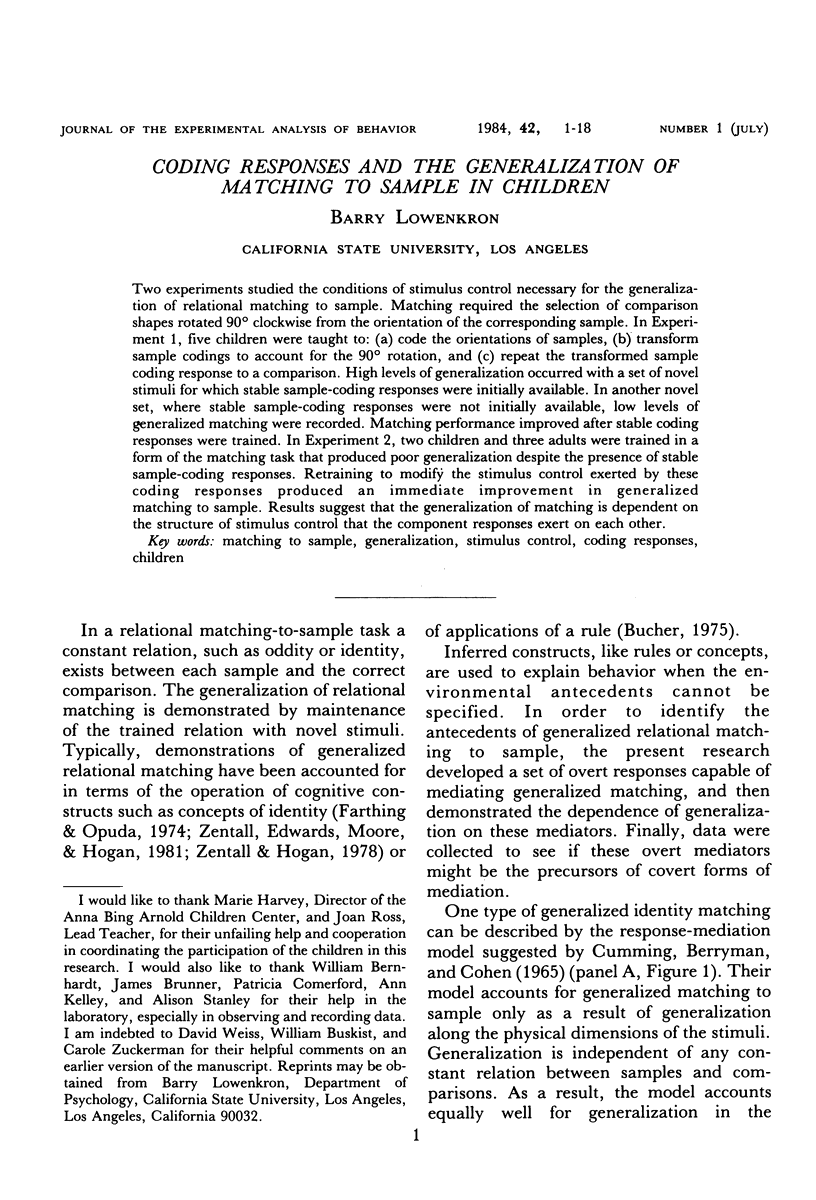

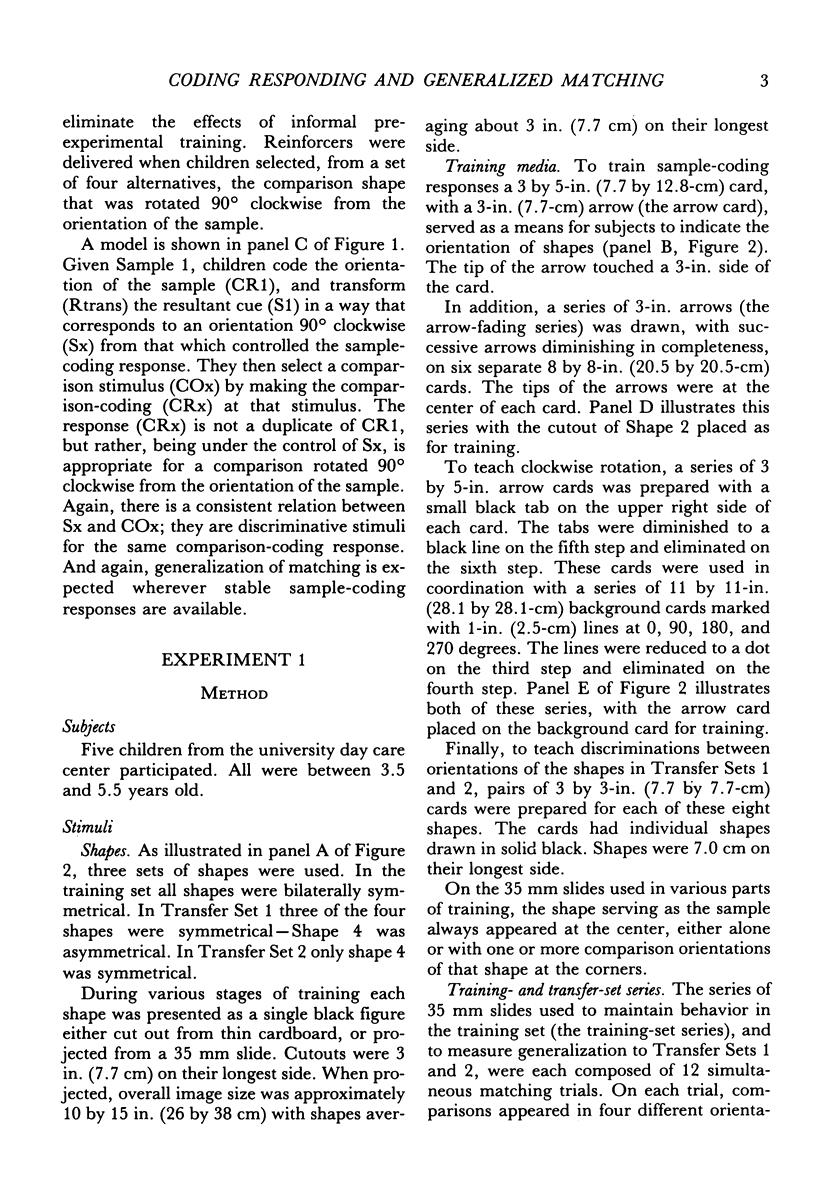
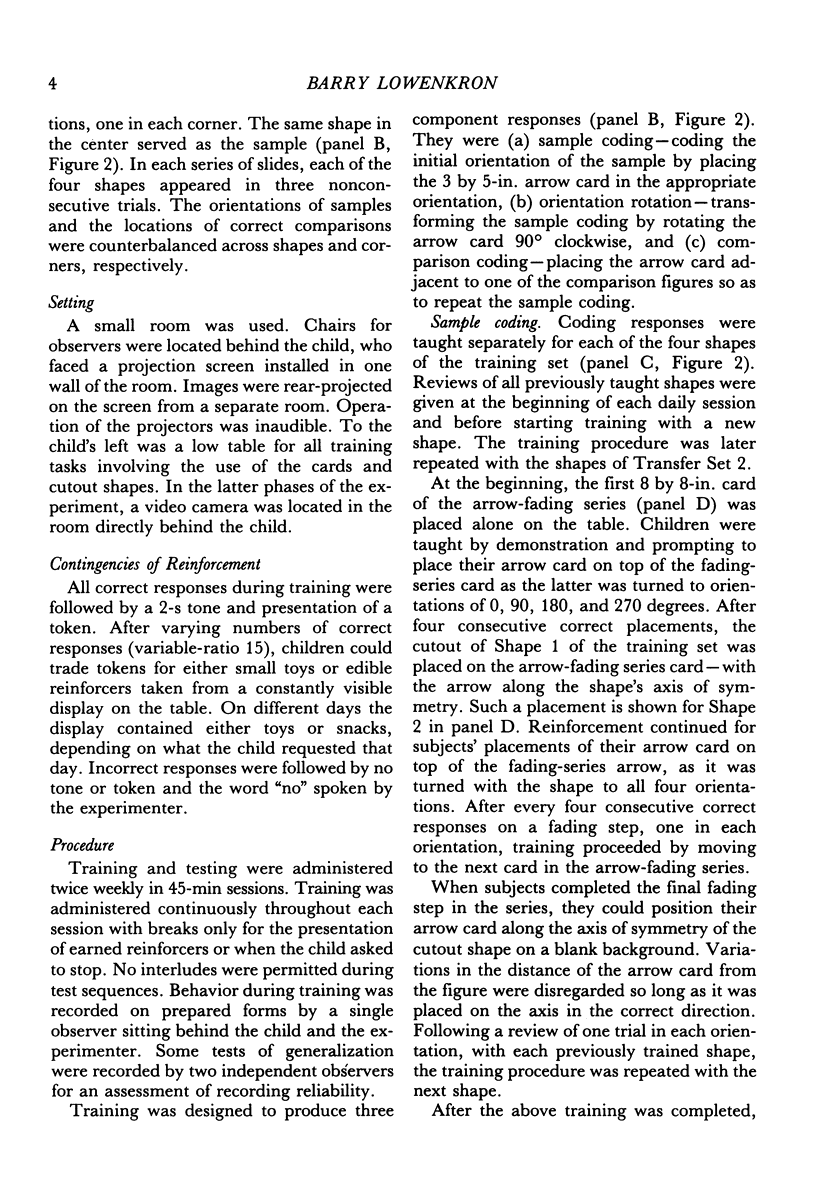

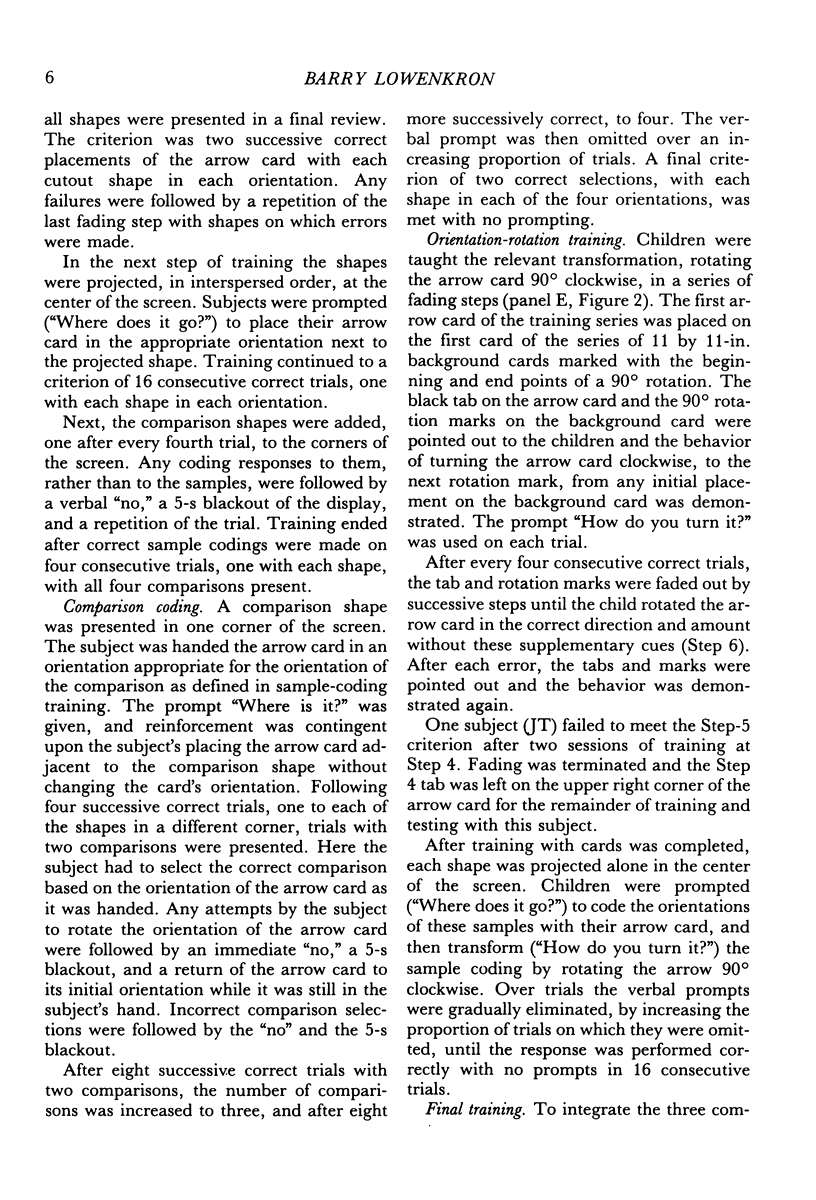
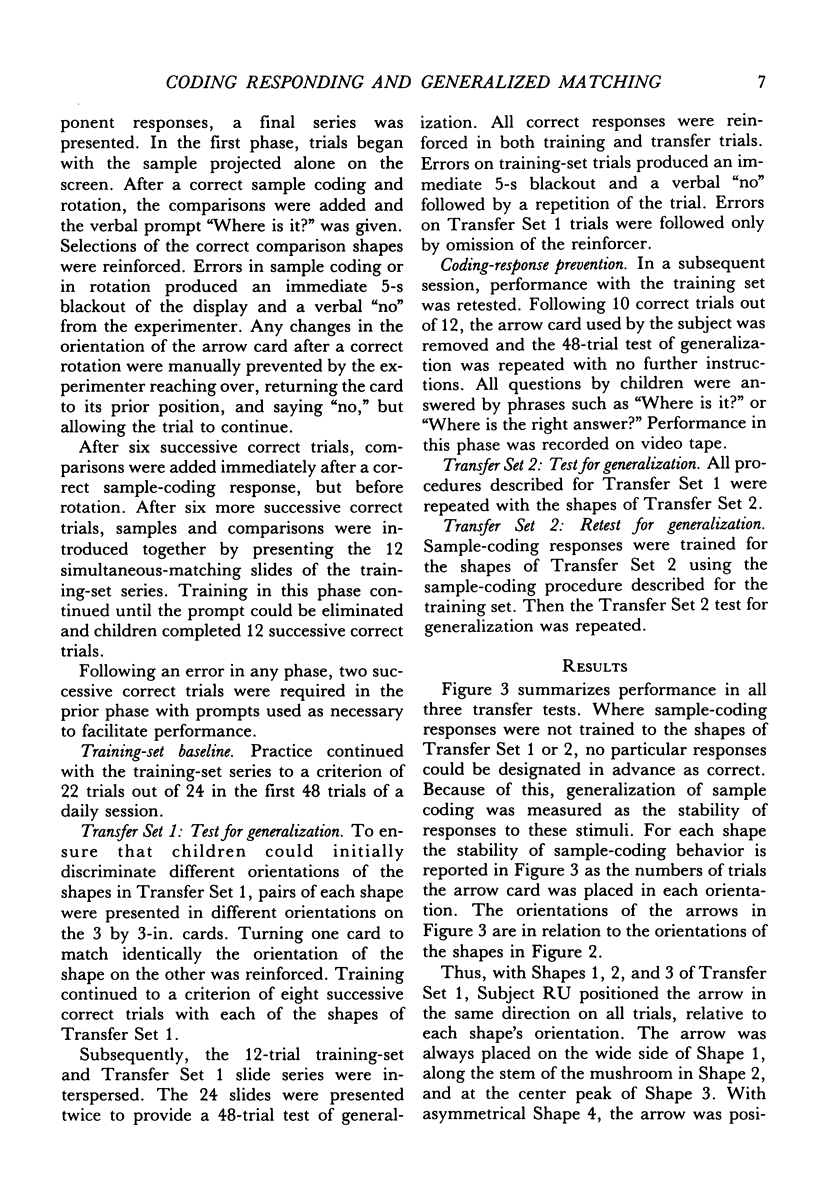
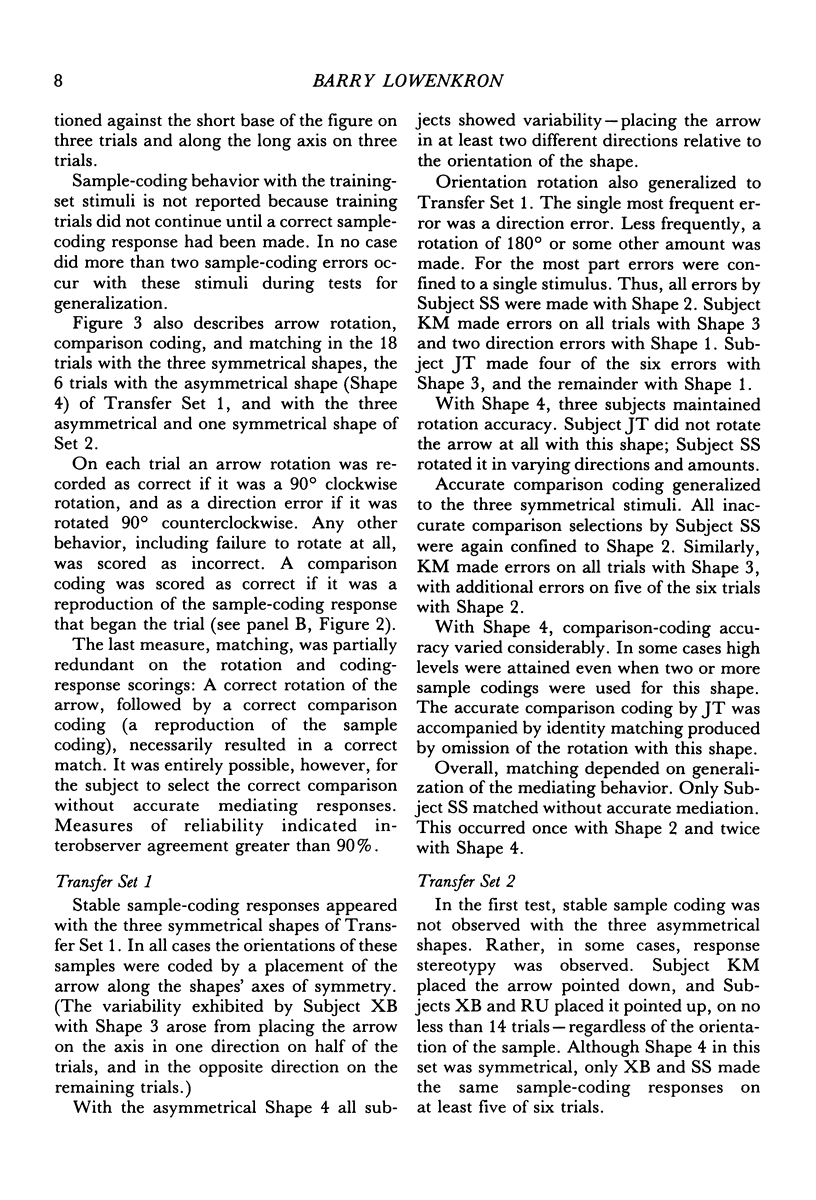

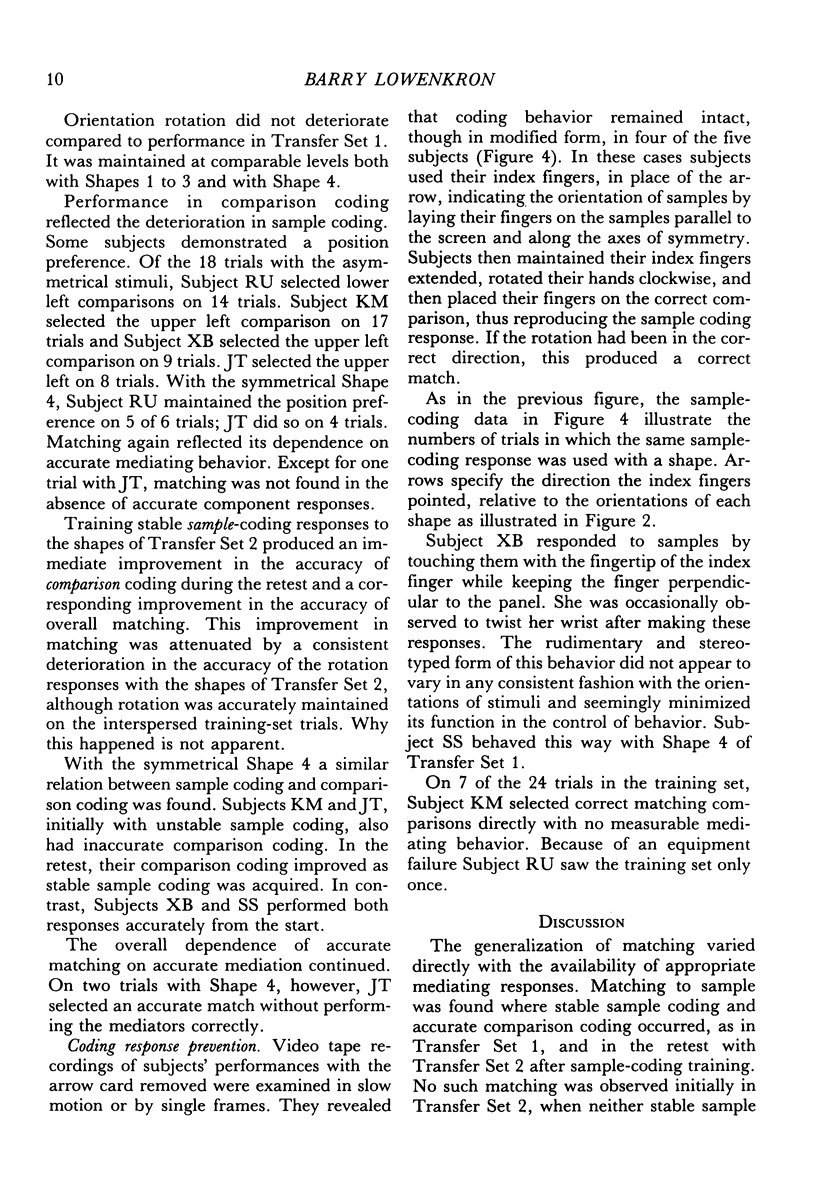
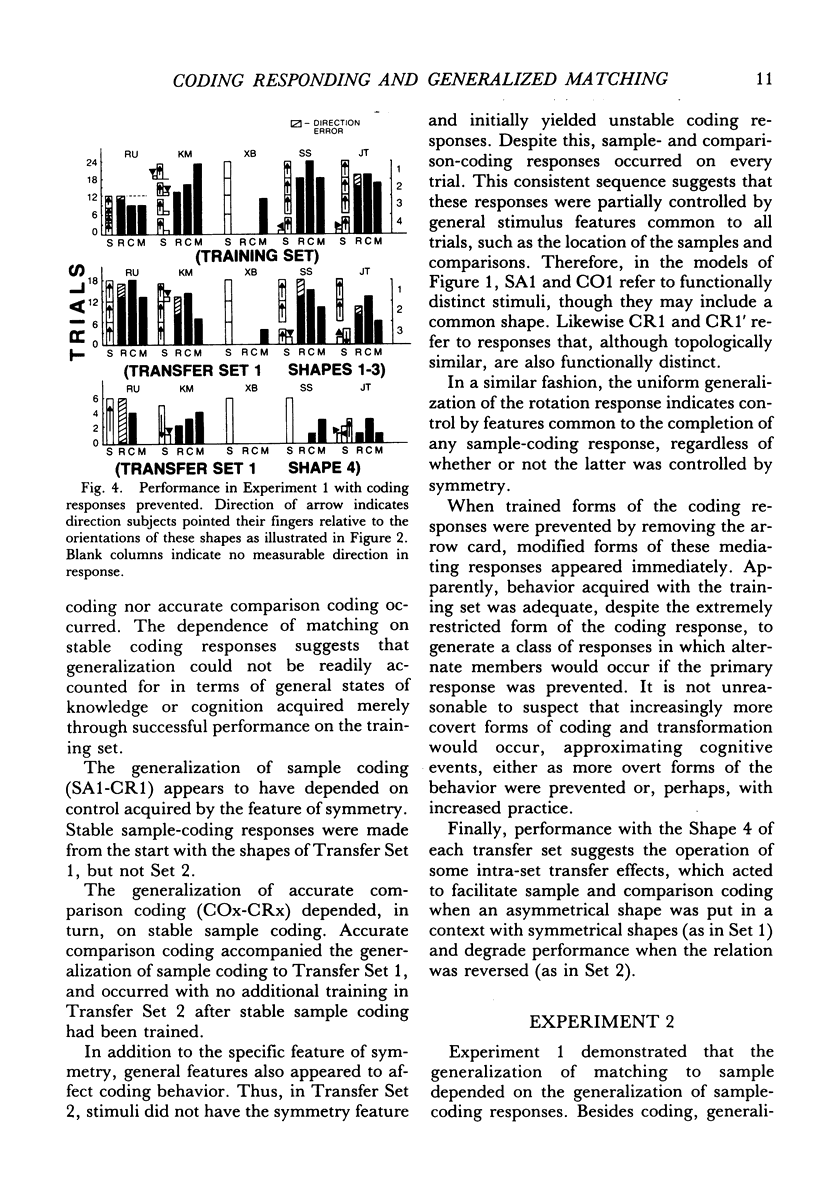
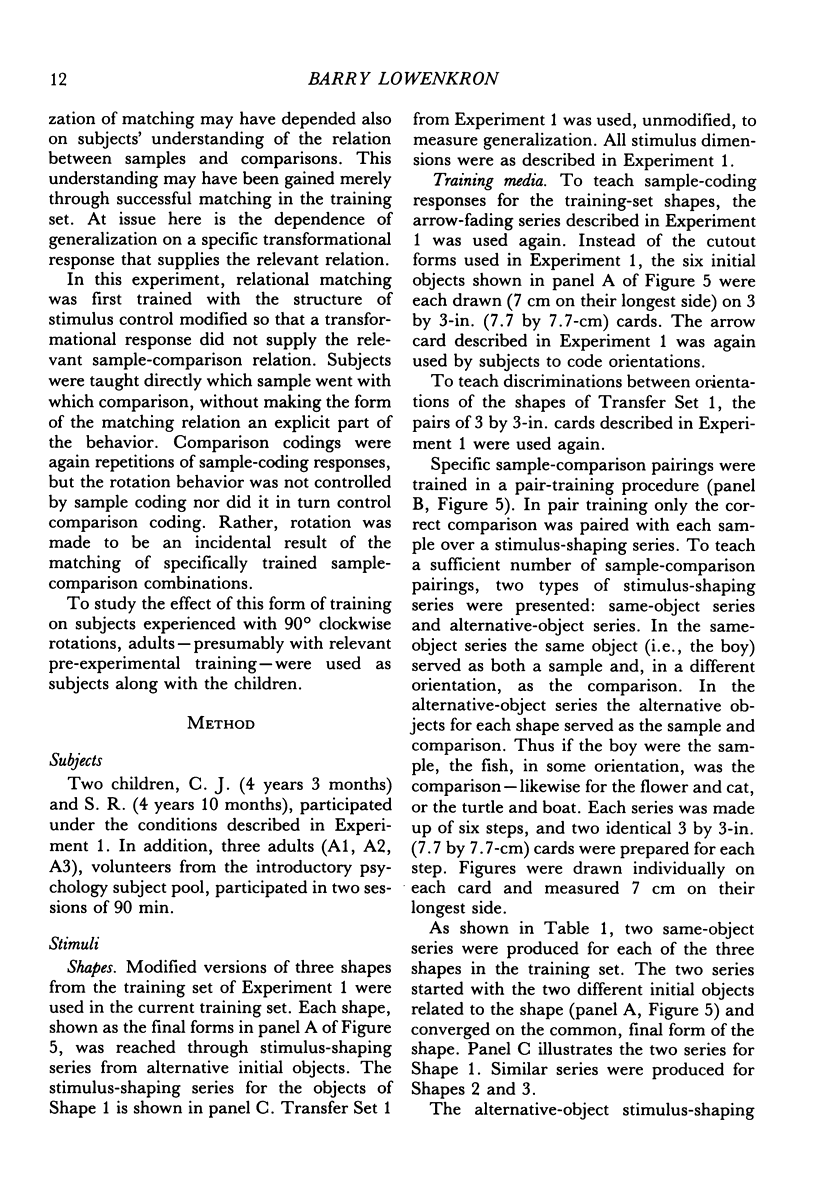
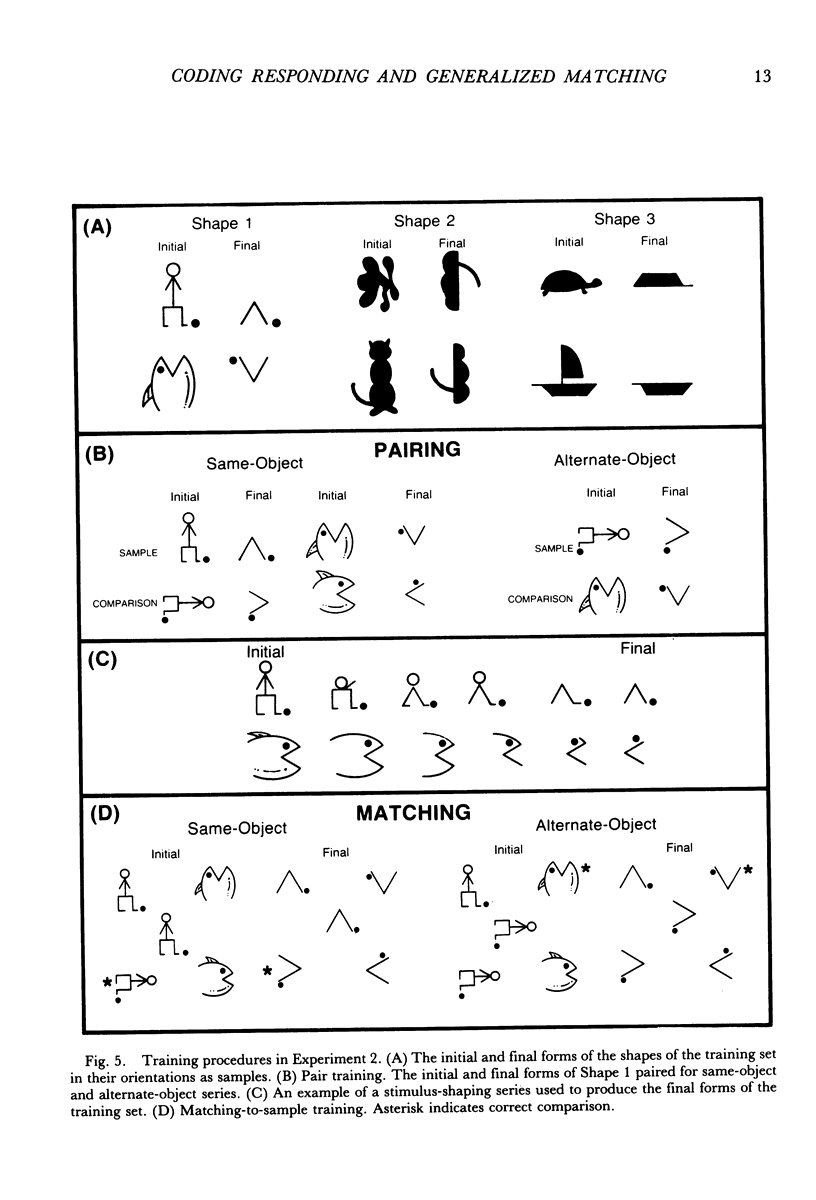

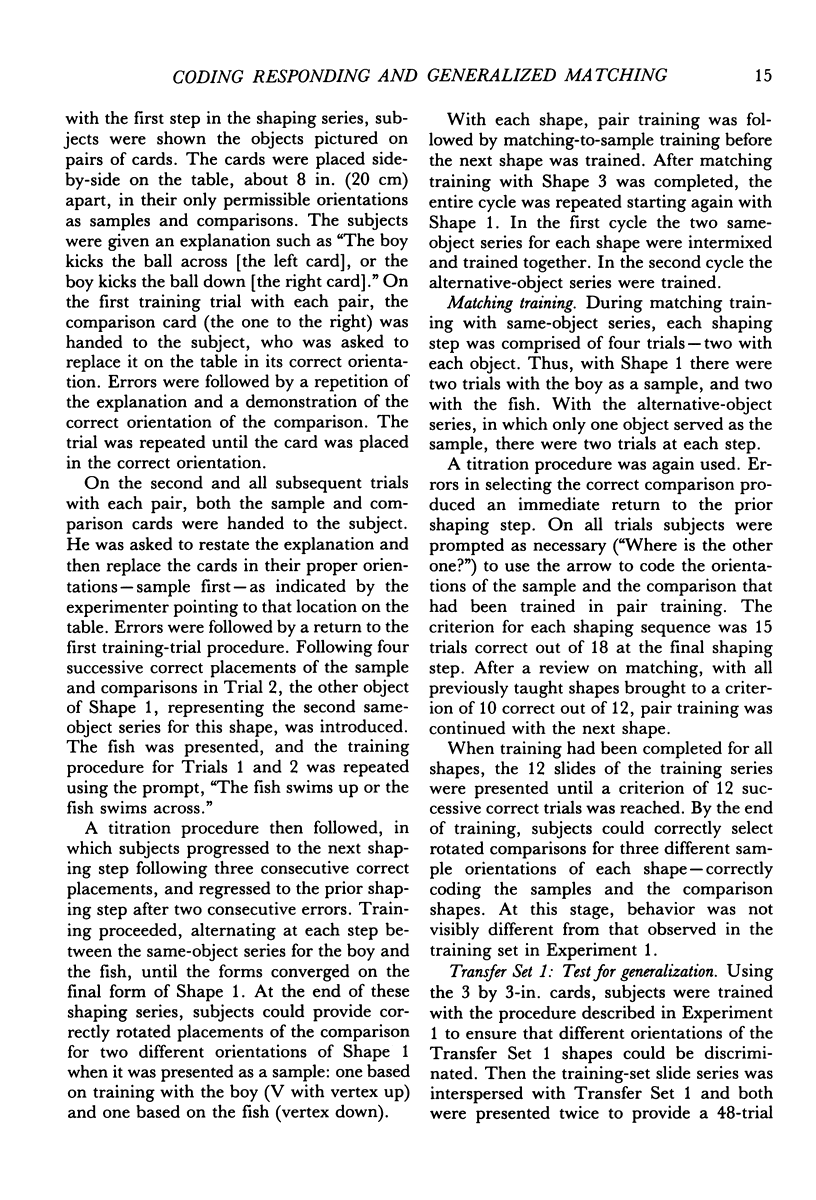



Selected References
These references are in PubMed. This may not be the complete list of references from this article.
- Cumming W. W., Berryman R., Cohen L. R. Acquisition and transfer of zero-delay matching. Psychol Rep. 1965 Oct;17(2):435–445. doi: 10.2466/pr0.1965.17.2.435. [DOI] [PubMed] [Google Scholar]
- Eckerman D. A. Generalization and response mediation of a conditional discrimination. J Exp Anal Behav. 1970 May;13(3):301–316. doi: 10.1901/jeab.1970.13-301. [DOI] [PMC free article] [PubMed] [Google Scholar]
- Farthing G. W., Opuda M. J. Transfer of matching-to-sample in pigeons. J Exp Anal Behav. 1974 Mar;21(2):199–213. doi: 10.1901/jeab.1974.21-199. [DOI] [PMC free article] [PubMed] [Google Scholar]
- Parsons J. A., Taylor D. C., Joyce T. M. Precurrent self-prompting operants in children: "Remembering". J Exp Anal Behav. 1981 Sep;36(2):253–266. doi: 10.1901/jeab.1981.36-253. [DOI] [PMC free article] [PubMed] [Google Scholar]
- Paul C. Sample-specific ratio effects in matching to sample. J Exp Anal Behav. 1983 Jan;39(1):77–85. doi: 10.1901/jeab.1983.39-77. [DOI] [PMC free article] [PubMed] [Google Scholar]
- Zentall T. R., Hogan E. Same/different concept learning in the pigeon: the effect of negative instances and prior adaptation to transfer stimuli. J Exp Anal Behav. 1978 Sep;30(2):177–186. doi: 10.1901/jeab.1978.30-177. [DOI] [PMC free article] [PubMed] [Google Scholar]


